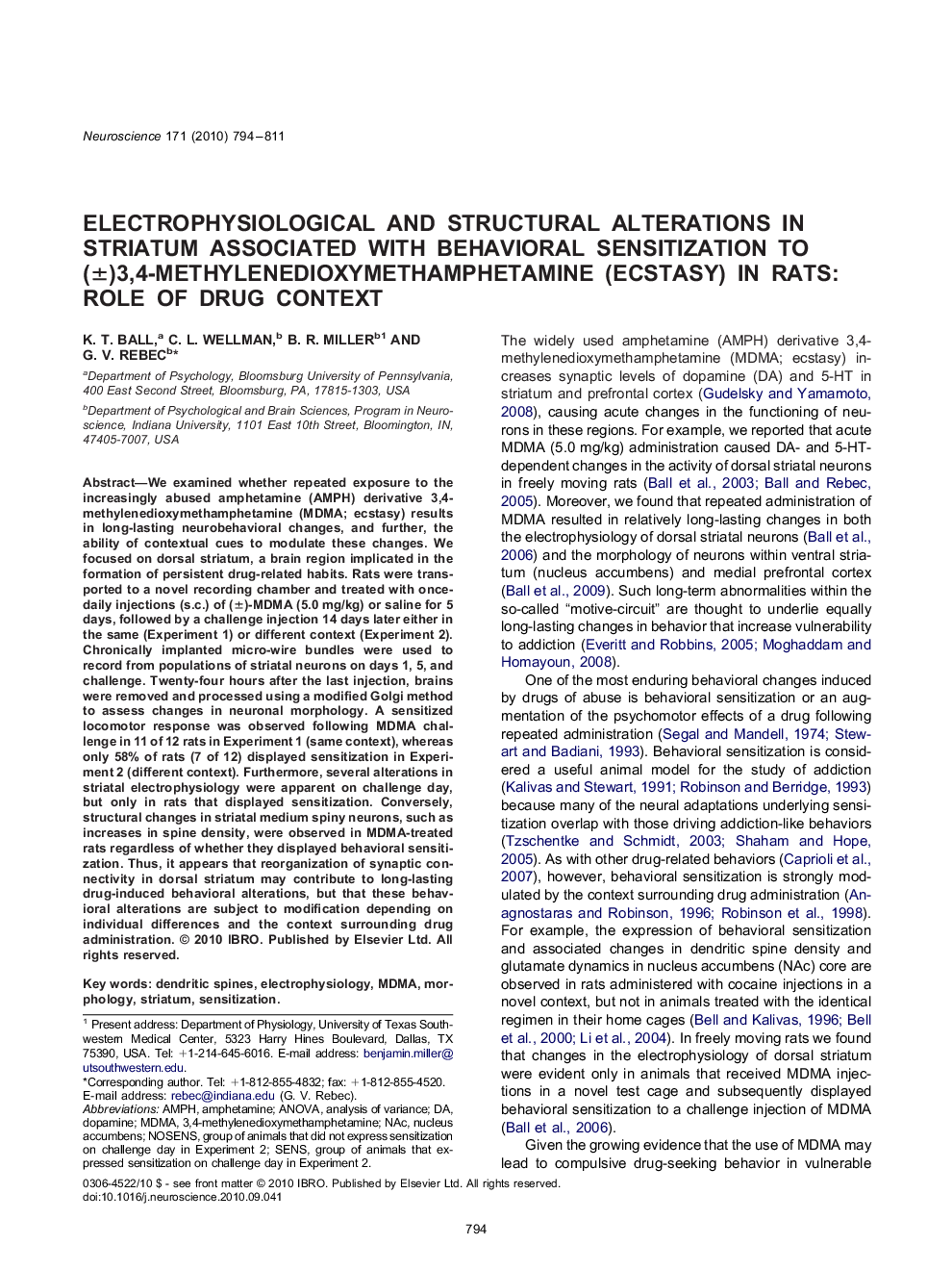| کد مقاله | کد نشریه | سال انتشار | مقاله انگلیسی | نسخه تمام متن |
|---|---|---|---|---|
| 4339250 | 1295740 | 2010 | 18 صفحه PDF | دانلود رایگان |

We examined whether repeated exposure to the increasingly abused amphetamine (AMPH) derivative 3,4-methylenedioxymethamphetamine (MDMA; ecstasy) results in long-lasting neurobehavioral changes, and further, the ability of contextual cues to modulate these changes. We focused on dorsal striatum, a brain region implicated in the formation of persistent drug-related habits. Rats were transported to a novel recording chamber and treated with once-daily injections (s.c.) of (±)-MDMA (5.0 mg/kg) or saline for 5 days, followed by a challenge injection 14 days later either in the same (Experiment 1) or different context (Experiment 2). Chronically implanted micro-wire bundles were used to record from populations of striatal neurons on days 1, 5, and challenge. Twenty-four hours after the last injection, brains were removed and processed using a modified Golgi method to assess changes in neuronal morphology. A sensitized locomotor response was observed following MDMA challenge in 11 of 12 rats in Experiment 1 (same context), whereas only 58% of rats (7 of 12) displayed sensitization in Experiment 2 (different context). Furthermore, several alterations in striatal electrophysiology were apparent on challenge day, but only in rats that displayed sensitization. Conversely, structural changes in striatal medium spiny neurons, such as increases in spine density, were observed in MDMA-treated rats regardless of whether they displayed behavioral sensitization. Thus, it appears that reorganization of synaptic connectivity in dorsal striatum may contribute to long-lasting drug-induced behavioral alterations, but that these behavioral alterations are subject to modification depending on individual differences and the context surrounding drug administration.
Journal: Neuroscience - Volume 171, Issue 3, 15 December 2010, Pages 794–811